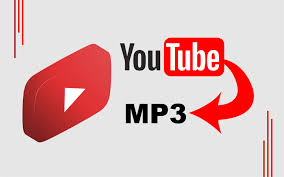Users have certain other options to usr the yt in order tom mp3, thus allowing them to avail audio content. Some people prefer to go with streaming directly from services like Spotify or Apple Music. These services bestow high-quality bit-rate sound from 96 kbps to even up to 320kbps based on the subscription plans. To give you an example, Spotify Premium guarantees a 320 kbps sound quality that is almost the same as many MP3 files. The obvious advantage of this is the near-instant access to an enormous list of songs with no downloading or conversion needed.
You could also take advantage of offline playback offered by streaming apps such as YouTube Music. Speaking of, a premium subscription also allows downloads for offline listening without having to rip content as an MP3. Doing this saves time because you do not have to use further conversion tools. YouTube Music also lets users save several songs offline, so this option is good for folks who have mobile plans with data caps.
Tidal and Amazon Music HD offer lossless streaming services to audiophiles in search of high-fidelity audio, for example. This means it streams music in FLAC, which is a lossless quality format at up to 1,411 kbps bitrates — much larger than the compressed MP3 files. Even in 2020, an International Audio Engineering Society study revealed a perceptible difference between lossy formats like MP3 and lossless ones (such as FLAC) that have potential benefits for high-end audio systems.

For those users, podcast platforms often serve as another viable alternative to YouTube-to-MP3ers. Apple Podcasts and Stitcher are two of the biggest podcast players, offering lots of content that many videos people convert to podcasts. While Apple now has over 2 million podcasts on its platform in 2021 (offering an alternative to spoken content such as interviews, talks etc.);
For those who prefer physical media, CDs (or even vinyl records) are the direct alternative to digital transformations. While CDs play in 16-bit/44.1 kHz audio and vinyl records are analog (although troubled by the warm sound) They're lossless formats not subject to the compression used in MP3s, making them perfect for audiophiles (centurions?) looking for good sound.
Finally, manual audio extraction and editing is performed by some users using third-party software such as Audacity or Adobe Audition. The software can capture the audio stream from any source such as video, and there is no need to use dedicated conversion services. For example, Audacity is open-source and allows the user to manually record audio in different formats such as WAV or FLAC giving more options then an automatic converted.
To learn the yt to mp3 conversion alternatives, inspect out this detailed overview on yt to mp3.